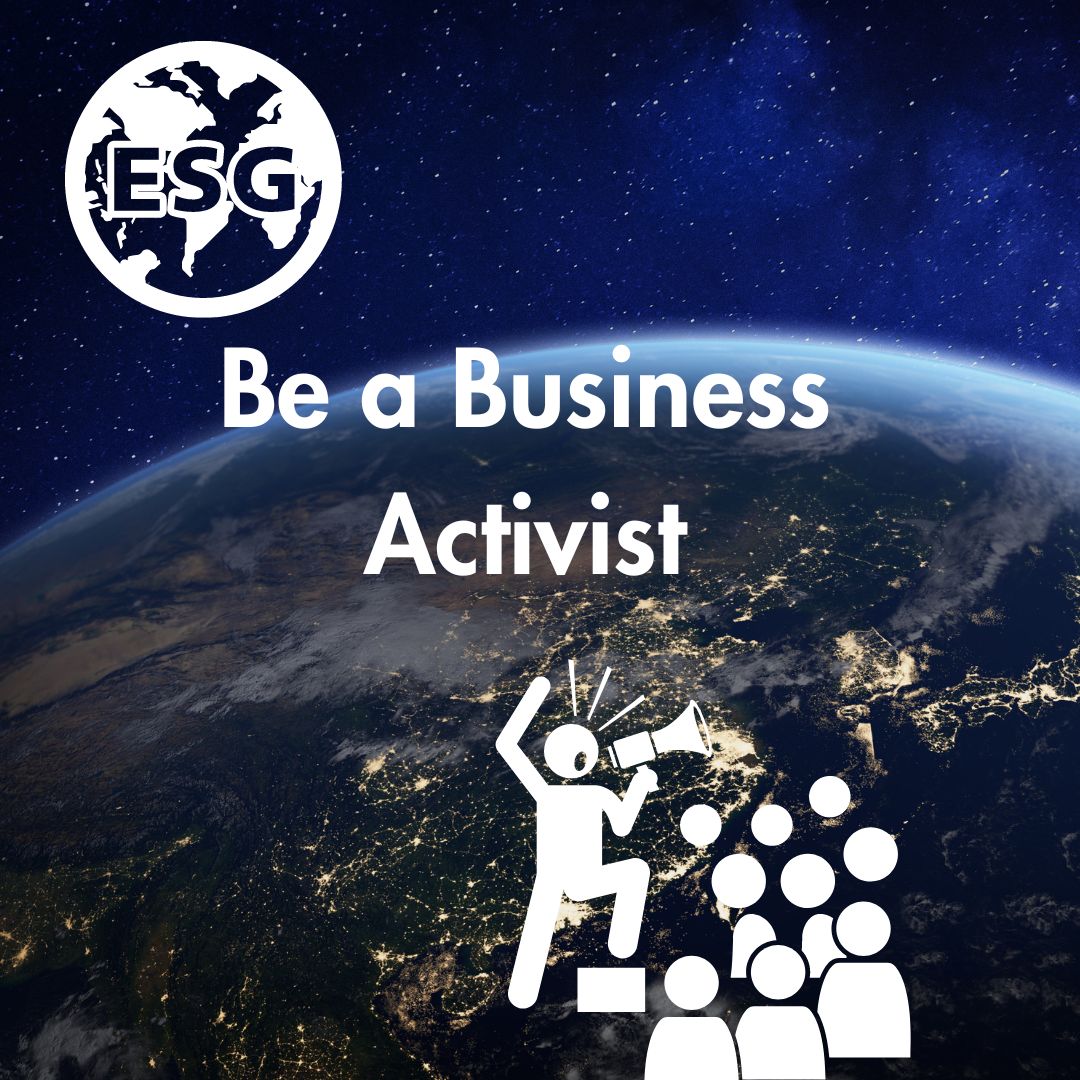Be a Business Activist
Yesterday I was part of the ESG Marketing panel session at the MTSS online summit, along with my co-speakers Gemma Butler, Can Marketing Save The Planet and Russ Avery, Avery & Brown, moderated by MTSS co-founder, Lisa Collins. During the session, I briefly talked about finding our inner business activist, but what does this mean and why should you consider it?
Let’s rewind
Since the industrial revolution, we’ve caused significant harm to the planet through extraction of the earth’s resources – fossil fuels, deforestation, industrial farming and fishing, consumerism and waste etc. Our economy, businesses and our lives are run in a linear fashion based on take, use and dispose, and we’ve adopted a profit over everything mentality where the welfare and happiness of people is far down the list of priorities when it comes to measuring success. Let’s be honest, these measurements have rarely made the list, until now. If we carry on with this tired, outdated linear model, we’ll continue on the same trajectory, an unliveable planet for future generations and significant harm to our own.
I still find it shocking that the UK is one of the most nature depleted countries in the world. We’ve lost 73 million birds over the last 50 years1 and our flying insects have declined by 60 percent in 20 years.2 Do you remember sitting in the back of the car when you were a kid and your parents switching the windscreen wipers on in the summer to clear the bugs? When did you last do that?
The way we live now is summed up beautifully by author Jess Scully in this Future Tense podcast, “That innocuous bit of plastic in the corner of your kitchen, this bin that you can just throw anything into, and what’s invisible to you is that it’s the front end of a multibillion dollar logistics industry that’s designed to help you forget that the things you consume continue to exist in the world after you’ve stopped using them, and the convenience of that, the frictionless nature of this system that we live in makes it very hard to see the invisible architecture and the costs attached to that activity to that behaviour. I think one of the things I experience and I think a lot of people experience is a sort of cognitive dissidence between our individual action and the scale of the problem that we face.”
The Doughnut
So, what do we do? We have a huge opportunity to change this by creating a circular economy and circular businesses that adopt ESG practises supporting a triple bottom line approach putting planet, people and profit on an equal footing. Kate Raworth’s Doughnut Economics is the foundation for this radical economic overhaul. In her book (of the same name) she explains the history and the pitfalls of GDP and uses the Doughnut to illustrate the enormous benefits of this transition. She says, “The cuckoo goal of GDP growth emerged from an era of economic depression, world war and cold war rivalry but it dominated economic thinking for over 70 years. In a few decades’ time, we will look back, no doubt, and consider it bizarre that we once attempted to monitor and manage our complex planetary household, with a metric so fickle, partial and superficial as GDP.”
What is the Doughnut in Doughnut Economics and how can it help you to rethink your business? The hole in the middle of the doughnut represents emissions and greenhouse gases, and the outside space around the doughnut represents the instability of the planet, you don’t want to be in the middle or on the outside. The Doughnut itself is the sweet spot. Using the Doughnut representation, we can illustrate where our companies sit alongside the industry, supply chain, local community, the planet and so on. Everything flows around the doughnut creating a systems approach of connectedness, where nothing is wasted. At Jump we’ll be using this imagery in our own Circular Business story telling.
Coming full circle, this is a very different way of running companies, we think it’s a beautiful way but it takes courage to flow against the tide particularly in the corporate environment. Join the Circular movement and become a business activist.
Kate Ford


